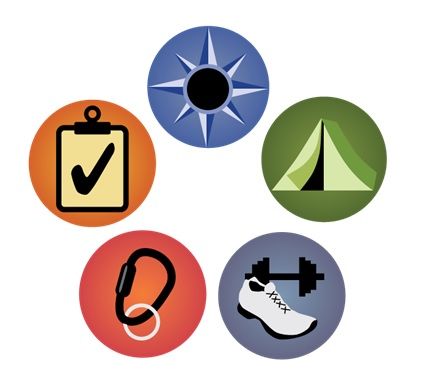-
Partner Services
- Curriculum Design & Development
- Faculty Development
- Instructor Staffing Services
-
Case Studies
- Colleges and Universities
- Columbus Council on World Affairs
- Nationwide
- Ohio Society of CPAs
- Supreme Court of Ohio Judicial College
- Degrees & Certificates
-
About Us
- Our Team
- Blog Archive
Categories
Authors
Archived Articles

Five Challenges for New Online Instructors
A boot camp for new online instructors focused on five challenges related to transitioning to online teaching, building spaces for learning, preparing students for the work of online learning, managing the classroom & assessing learner outcomes.
Craig, a new instructor, had this to say about teaching online: “I’m a ‘people person.’ I fear that I won’t be able to build the important student/teacher relationships needed to effectively instruct a course without face-to-face contact.”
He’s just one of the “skeptically optimistic” participants in a faculty development course my colleague and I taught at a large research university. For more than a decade, harried teaching assistants and new instructors would show up asking for guidance about how to get through the first few days of their newly assigned online courses.
To meet the demand, my colleague and I developed a boot camp for new online instructors that was light on theory and heavy on activities to help instructors plan, manage, and facilitate online instruction during the beginning weeks of class. We identified five challenges that new instructors face immediately and suggested solutions based on our research and experience. Did it work? Of the 52 initial participants, 100% said they gained confidence to teach online and use online tools; 75% said they would be able to get to know their students as well online as in person; and 67% felt they would be able to connect well with their students.
The five challenges new online instructors face are related to preparing to teach online, examining the virtual classroom space, engaging with learners, and assessing learner performance in the virtual classroom. Here is our insight into these challenges:
Challenge 1: Making the Transition
Preparing yourself for online teaching means getting yourself mentally ready to adjust your teaching style. Perhaps you will need to examine your philosophy of instruction. You may need to adjust how you think about your relationship with learners, how the work of learning occurs, and how your role as instructor—the person responsible for fostering a learning environment—may change. This is the stage in which you make the decision to teach or not to teach online, if you have the choice.
Challenge 2: Building Online Spaces for Learning
Many instructors in traditional settings are responsible for building their own courses. Selecting appropriate tools and learning spaces involves investing time in learning new technologies and deciding on the mode of instruction, whether synchronous, asynchronous, blended, or flipped, and the various permutations of combining text, audio, physical space, and virtual spaces. You will also need to become familiar with your course management systems as well as the tools for engaging learners and presenting content.
Challenge 3: Preparing Students for Online Learning
Preparing learners for online learning recognizes that you, as instructor, have to know the capabilities of your students, help your students build a welcoming environment, let your learners know how and when you are available, and set expectations for your learners as online participants.
Challenge 4: Managing and Facilitating the Online Classroom
Facilitating online learning is the heart of teaching online. In this competency, you must manage but not control the teaching and learning processes, deal with issues of appropriate participation and engagement, find a balance between being present and being too present, and continually monitor and revise the course as conditions change. You will also need to know how to build a community that is cohesive and that supports the learning of individuals and the group.
Challenge 5: Assessing Learner Outcomes
Knowing the current concepts, literature, and methods in your field means that you are able to communicate the standards for acceptable performance and provide timely, corrective, supportive, informational, and confirming feedback. In this competency, you will also need to know how to use the tools in your online instructional platform for testing, if that is a requirement for your course.
How to Meet the Five Challenges
|
Challenge |
Strategy |
|
Making the Transition to Online Teaching |
Social practices help you establish your online persona and create an environment for learning. |
|
Building Online Spaces for Learning |
Use tools to build private areas for learners to record their emerging ideas and shared spaces for learners to negotiate meaning. |
|
Preparing Students for Online Learning |
Give your learners opportunities to feel connected to you and to one another. |
|
Managing and Facilitating the Online Classroom |
Learning communities provide a powerful context for learning where the members interact with one another in a meaningful way and accept co-ownership of the teaching and learning process. |
|
Assessing Learner Outcomes |
Measure outcomes through authentic assessments and timely, meaningful feedback. |
Reference
Stein, D. S., & Wanstreet, C. E. (2017). Jump-start your online classroom. Sterling, VA: Stylus.
For more information and instructor resources, visit https://your-online-classroom.com/.
Copyright 2025 Franklin University